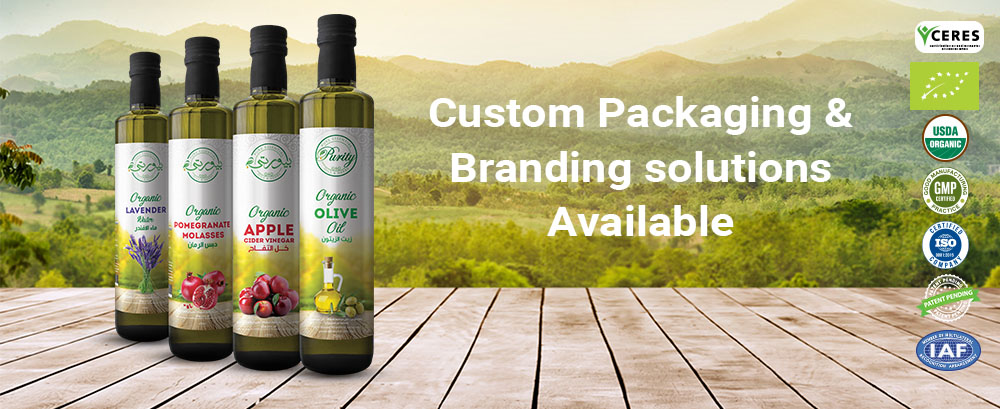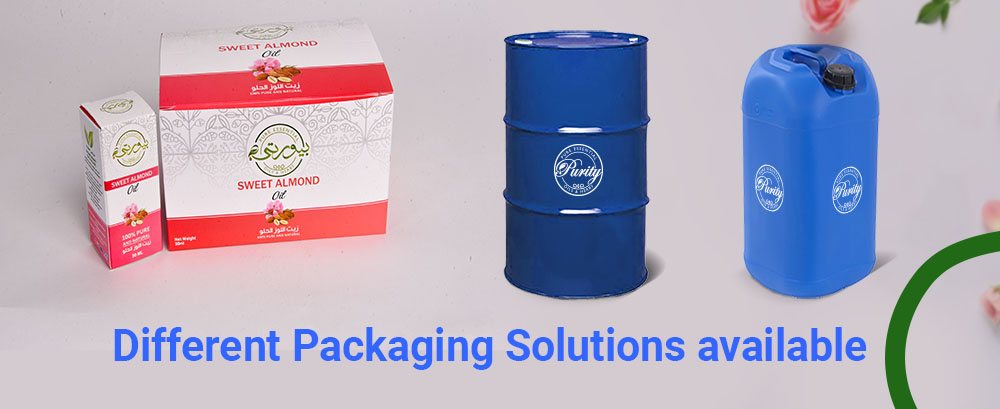Best Seller Items
-
Coconut Oil Organic & Conventional Consumer Pack
Coconut oil comes from the nut (fruit) of the coconut palm. The oil of the nut is used to make medicine. Some coconut oil products are referred to as “virgin” coconut oil. Unlike olive oil, there is no industry standard for the meaning of “virgin” coconut oil. The term has come to mean that the oil is generally unprocessed. For example, virgin coconut oil usually has not been bleached, deodorized, or refined.
Some coconut oil products claim to be “cold pressed” coconut oil. This generally means that a mechanical method of pressing out the oil is used, but without the use of any outside heat source. The high pressure needed to press out the oil generates some heat naturally, but the temperature is controlled so that temperatures do not exceed 120 degrees Fahrenheit.
People use coconut oil for eczema (atopic dermatitis). It is also used for scaly, itchy skin (psoriasis), obesity, and other conditions, but there is no good scientific evidence to support these uses.
How does it work ?
Coconut oil contains a certain kind of fat known as “medium chain triglycerides.” Some of these fats work differently than other types of saturated fat in the body. When applied to the skin, coconut oil has a moisturizing effect.Login to view pricesCoconut Oil Organic & Conventional Consumer Pack
Login to view prices -
Argan Oil Organic & Conventional Consumer Pack
Argan oil is made from the kernels that grow on the argan trees native to Morocco. It’s most frequently sold as pure oil, which can be directly applied topically (directly to the skin) or ingested in order to provide several health benefits. It comes in supplement capsule form to be taken by mouth. It’s also commonly mixed into a number of cosmetic products like shampoos, soaps, and conditioners.
Argan oil has traditionally been used both topically and orally to improve the health of skin, hair, and nails. It contains a number of different beneficial properties and vitamins that form a powerful combination to boost skin health.
Argan oil has been a culinary staple in Morocco for centuries — not only because of its subtle, nutty flavor but also its wide array of potential health benefits. This naturally occurring plant oil is derived from the kernels of the fruit of the argan tree.
Although native to Morocco, argan oil is now used across the globe for a variety of culinary, cosmetic and medicinal applications.Login to view pricesArgan Oil Organic & Conventional Consumer Pack
Login to view prices -
Olive Oil Organic & Conventional Consumer Pack
Olive oil is a liquid fat obtained from olives a traditional tree crop of the Mediterranean Basin. The oil is produced by pressing whole olives. It is commonly used in cooking, whether for frying or as a salad dressing. It is also used in cosmetics, pharmaceuticals, and soaps, and as a fuel for traditional oil lamps, and has additional uses in some religions.
The phytonutrient in olive oil, oleocanthal, mimics the effect of ibuprofen in reducing inflammation, which can decrease the risk of breast cancer and its recurrence. Squalene and lignans are among the other olive oil components being studied for their possible effects on cancer.Login to view pricesOlive Oil Organic & Conventional Consumer Pack
Login to view prices -
Tagette Marigold Tagetes minuta Essential Oil
Common name: Mexican Marigold
Latin name: Tagetes minuta L.
Family: Asteraceae (Compositae)
Other names: English: Aztec marigold, dwarf marigold, khaki-bush, Mexican marigold, Muster John Henry, stinking-Roger, stinkweed, wild marigold; Spanish: chinchilla enana; Hawai‘I: ‘ōkole‘oi‘oi; Bot. syn.: Tagetes glandulifera Schrank.
The common term “marigold” embraces a diversity of plants with golden flowers, most of which belong to the family Compositae. Prominent among the marigolds are various species of Tagetes.
Login to view pricesTagette Marigold Tagetes minuta Essential Oil
Login to view prices
-
Geranium Pelargonium graveolens Essential Oil
Common name: Geranium
Latin name: Pelargonium graveolens L.
Family: Geraniaceae
Other names: Engl.: old fashion rose geranium, sweet scented geranium, lemon-scented geranium, rose geranium, rose-scent geranium. Deu.: Rosengeranie, Zitronen-Geranie. Suom.: palsamipelargoni
A lot of confusion exists today with the species Pelargonium, as to which variety applies to what origin. The classification of these species is made more difficult by the hybridization of garden species that leave us with numerous varieties. For example, Pelargomium graveolen, P. roseum, P. cpitatum, P. odoratissimu, P. fragrans, and P. terebinthinaceum have been stated as the source of Geranium oil.
Login to view pricesGeranium Pelargonium graveolens Essential Oil
Login to view prices -
Basil Ocimum basilicum Essential Oil (Linalol & Methyl Chavicol types)
The world market for basil oil is dominated by two main types, the European and Egyptian basil oils.
- The European sweet basil, cultivated and distilled in Europe, the Mediterranean region, and the United States is considered to be of the highest quality, producing the finest odor. Characteristically, the essential oil from this basil contains high concentrations of linalool and methylchavicol (estragole), at a ratio of 2 or 3:1. Other constituents found in low concentrations include: 1,8-cineole, eugenol, alpha-terpeniol, beta-caryophyllene, geraniol, sabinene, alpha-phellandrene, gamma-terpinene, thujone, myrcene, limonene, ocimene, and para-cymene.
- The Egyptian basil oil is very similar to the European but with a higher concentration and ratio of methylchavicol relative to linalool.
Login to view pricesBasil Ocimum basilicum Essential Oil (Linalol & Methyl Chavicol types)
Login to view prices -
Jasmine Jasminum officinale Absolute Oil
Common name: Jasmine
Latin name: Jasminum officinale L.
Family: Oleaceae
Other names: Arab.: Yasmin or Ysmyn (Origin of Jasmine name); Engl.:Common White Jasmine, Poet’s Jasmine, Persian: Jessamine, Sp.: jazmin China: Yeh Hsi Ming Botan.: Jasminum grandiflorum, Jasminum officinale var. grandiflorum.
Two types of jasmine are used for the extraction of oil. Some botanists describe them as two distinct species: J. grandiflorum and J. officinale, while others consider J. grandiflorum to be a variety of officinale. The oil of the two flowers is virtually identical.
Poet’s jasmine: (White Jasmine) Jasminum officinale L.
Royal jasmine: (Catalonian and Spanish jasmine) Jasminum grandiflorum L.
Login to view pricesJasmine Jasminum officinale Absolute Oil
Login to view prices -
Rose Oil (Egypt & India)
Common name: Provence Rose
Latin name: Rosa centifolia L.
Family: Rosaceae
Other names: Engl.: cabbage rose, hundred-leaved rose, pale rose. Cabbage Rose [P,B,H,E], Franse Roos [D], French Rose [B,P,E], Gul [E], Gula Bagh [E], Gulab [E], Hundred-leaved Rose [H], Provence Rose [E], Red Provins Rose [H], Rosa Centofoglie [E], Rose [E], Rosier Gallique [E], Ward Juri Berri [E] Deu.: Zentifolie. Suom.: kartanoruusu. Pharm.: attar of rose, flores rosarum incarnatarum, otto of rose. Bot. Syn.: Rosa provincialis (non J.Herrm.), Rosa gallica centifolia ((L.)Regel.), R. centifolia var. cristata[B,P] R. centifolia var. muscosa[B,P] R. gallica[B,DUTCH,E,G,H,HORTIPLEX,P] R. gallica var. conditorum[G] R. gallica var. officinalis[G] R. gallica var. versicolor[G]
Login to view pricesRose Oil (Egypt & India)
Login to view prices -
Cumin Seeds Cuminum cyminum Essential Oil
Latin name: Cuminum cyminum L.
Family: Apiaceae (Umbelliferae)
Other Names: Engl.: cumin, green cumin, jeera, white cumin. Deu.: Kreuzkümmel, Mutterkümmel, Römischer Kümmel, Weisser Kreuzkümmel. Suom.: roomankumina, juustokumina, maitokumina. Sven.: spiskummin, romersk kummin, vit kummin. Fran.: cumin. Span.: comino. Bot. syn.: Cuminum odorum Salisb Cumin, Cuminum cyminum L., also known as Cuminum odorum Salisb
Description:
Cuminum cyminum L. is a slender, rather pretty annual growing to a height of 1 ft. or less and bearing very finely divided leaves. The aromatic, dried ripe fruits (seeds) are of elongated, oval shape, about 5 to 6 mm long, and light brown in color.
Login to view pricesCumin Seeds Cuminum cyminum Essential Oil
Login to view prices -
Tagette Marigold Tagetes minuta Essential Oil
Common name: Mexican Marigold
Latin name: Tagetes minuta L.
Family: Asteraceae (Compositae)
Other names: English: Aztec marigold, dwarf marigold, khaki-bush, Mexican marigold, Muster John Henry, stinking-Roger, stinkweed, wild marigold; Spanish: chinchilla enana; Hawai‘I: ‘ōkole‘oi‘oi; Bot. syn.: Tagetes glandulifera Schrank.
The common term “marigold” embraces a diversity of plants with golden flowers, most of which belong to the family Compositae. Prominent among the marigolds are various species of Tagetes.
Login to view pricesTagette Marigold Tagetes minuta Essential Oil
Login to view prices -
Garlic Allium Sativum Essential Oil
Common name: Garlic
Latin name: Allium sativum L.
Family: Liliaceae
Other names: Engl.: garlic, English garlic, poor man’s treacle. Deu.: Knoblauch, Alterswurzel, Knobloch, Knofel, Stinkerzwiebel. Suom.: valkosipuli. Sven.: vitlök. Fran.: ail, ail blanc, ail cultivé. Span.: ajo.
Login to view pricesGarlic Allium Sativum Essential Oil
Login to view prices -
Onion Allium cepa Essential Oil (Egypt & China)
Common name: Onion
Latin name: Allium cepa L.
Family: Liliaceae
Other names: Engl.: garden onion, common onion, onion, shallot. Arabic: Basal. Deu.: Zwiebel. Suom.: ruokasipuli, hillosipuli, kepasipuli, punasipuli, ryvässipuli, tavallinen sipuli, vihersipuli. Sven.: matlök, gullök, potatislök, rödlök, syltlök. Fran.: oignon
Login to view pricesOnion Allium cepa Essential Oil (Egypt & China)
Login to view prices -
Peppermint Mentha Piperita Essential Oil (Egypt & China)
Common name: Peppermint
Latin name: Mentha x piperita L.,
Family: Lamiaceae
Other names: Engl.: peppermint, black peppermint, chocolate mint. Deu.: Pfefferminze. Suom.: piparminttu. Sven.: pepparmynta. Fran.: menthe poivrée. Bot. syn.: Mentha aquatica L. x spicata L., Mentha dumetorum Schultes.
Peppermint is a sterile hybrid derived from a cross between Mentha aquatica and M. spicata.
Login to view pricesPeppermint Mentha Piperita Essential Oil (Egypt & China)
Login to view prices -
Neroli Citrus aurantium Flower Essential Oil
Common name: Bitter Orange
Latin name: Citrus aurantium L.
Family: Rutaceae.
Other names: Engl.: bitter orange, sour orange, bigarade, bigarade orange, Seville orange. Deu.: Bitterorange, Bittere Orange, Pomeranze. Suom.: pomeranssi, hapanappelsiini. Sven.: pomerans. Fran.: bigarade, bigardier, oranger amer. Span.: naranja agria, naranja amarga. Pharm.: aurantii amari cortex, aurantii flores , folia aurantii, fructus aurantii, oil of neroli, oil of petit-grain, oleum neroli. Bot. syn.: Citrus amara Link, Citrus aurantium L. var. amara L., Citrus bigaradia Duhamel, Citrus bigarradia Loisel., Citrus vulgaris Risso.
Login to view pricesNeroli Citrus aurantium Flower Essential Oil
Login to view prices -
Molokhia Egyptian Spinach Corchorus olitorius dried Leaves and Powder in bulk packaging
Molokhia or Mulukhiya, commonly known as Egyptian Spinach, Mallow, Nalta Jute, or Tossa Jute is an annual herb native to ancient Egypt. It’s leaves are used and prepared as a vegetable and it is a staple ingredient in Middle Eastern, East African, and North African cuisine.
Sometimes referred to as Middle East’s super-green, Molokhia is packed full of vitamins and minerals. It’s rich in fiber, potassium, iron, calcium, magnesium, phosphorous, and selenium, as well as vitamins C, E, K, A, B6, and niacin.
Molokhia has dark green leaves, green and red stems, vibrant yellow flowers, and seedpods that somewhat resemble okra. Plant Molokhia in the Spring and enjoy harvesting it all Summer long. The average height is 2 ft but Molokhia can grow as high as 10 ft in just one growing season. That’s a lot of fresh Molokhia!
Login to view prices -
Dehydrated Carrot Daucus carota in bulk packaging
Using dehydrated carrots in your cooking is convenient and easy! dehydrated carrots packed with vitamin A, carrots add color and sweetness to many dishes. You can add dehydrated carrots to stews and soups. They also work great for stir-frying with other vegetables. You can substitute dehydrated carrots for fresh vegetables in just about any dish, including casseroles, loafs, pizza toppings, omelets and breads.
Login to view pricesDehydrated Carrot Daucus carota in bulk packaging
Login to view prices





